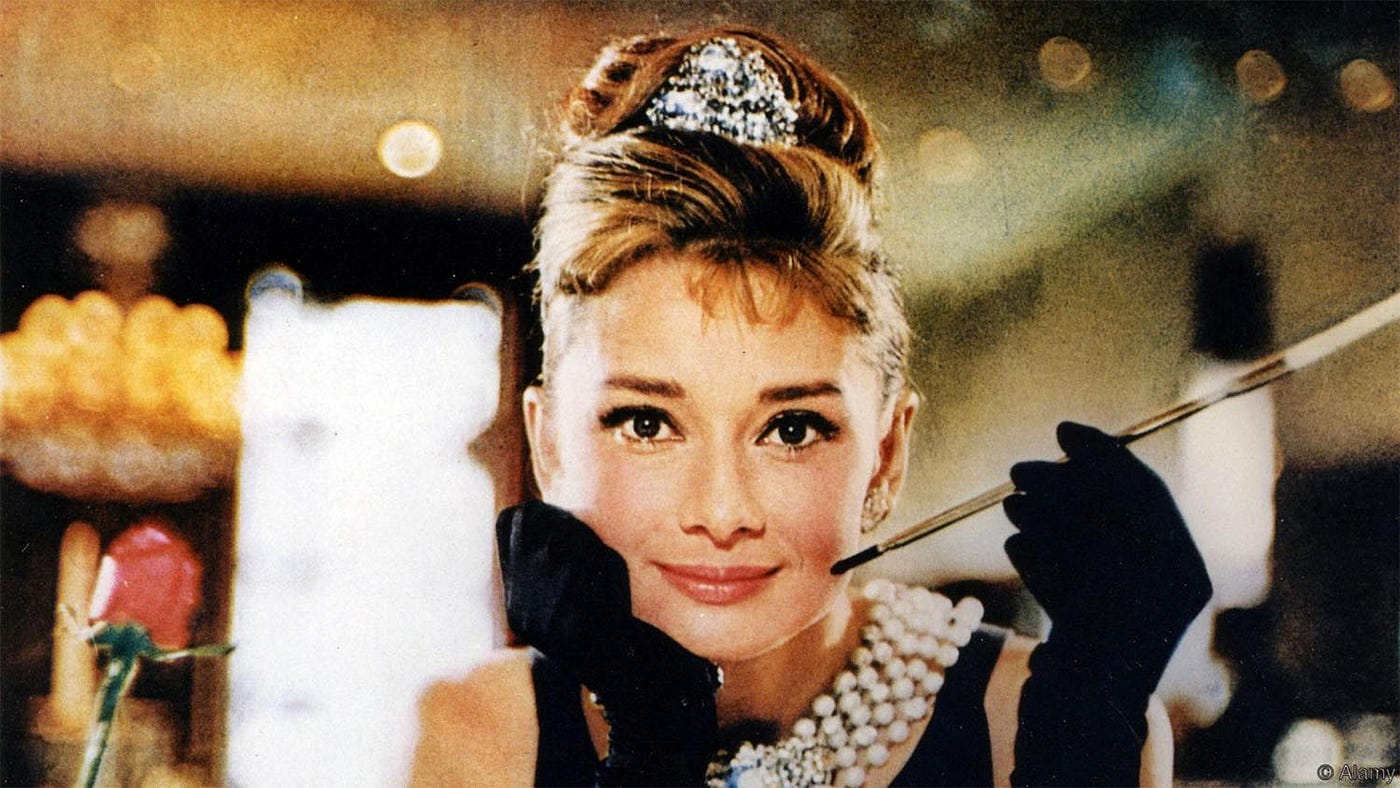Audrey Hepburn, born Audrey Kathleen Ruston on May 4, 1929, in Ixelles, Belgium, was a Belgian-British actress and style icon. She is best known for her roles in Breakfast at Tiffany’s (1961) and Roman Holiday (1953), but her impact on fashion and culture extends far beyond her on-screen performances. Hepburn’s unique style and grace, coupled with her tireless efforts on behalf of children and the underprivileged, established her as one of the most beloved and respected icons of the 20th century.
Hepburn’s early life was marked by tragedy and instability. She was raised in Nazi-occupied Belgium during World War II, and her experiences as a child in the war left a lasting impact on her. She aspired to be a ballet dancer, but a leg injury during her teenage years ended that dream. She then turned to acting, making her debut in the 1948 film adaptation of William Shakespeare’s “Nancy Steele Is Missing!” Hepburn’s performance caught the attention of critics and producers, and she quickly became a rising star.
In the early 1950s, Hepburn transitioned from dramatic roles to lighter fare, often playing the lead in romantic comedies. Her roles in films like Roman Holiday and Sabrina (1954) showcased her charm, wit, and effortless grace. During this period, Hepburn became a fashion icon, known for her classic yet trendsetting style. She wore Givenchy haute couture and became synonymous with the “little black dress” design by Hubert de Givenchy, which she wore in Breakfast at Tiffany’s. Her fashion sense was a departure from the over-the-top fashions of the era, and she became a muse and collaborator to some of the most renowned fashion designers in the world.
However, Hepburn’s impact extends far beyond the world of fashion. Her humanitarian work is legendary. A founding member of UNICEF’s Goodwill Ambassadors in 1988, Hepburn traveled to some of the most underdeveloped countries in the world, advocating for the rights of children and shining a spotlight on their plight. Her tireless efforts on behalf of children remain a powerful testament to her character and values. In 1992, UNICEF awarded her the Audrey Hepburn Award for her dedication and commitment to improving the lives of children worldwide.
Hepburn’s legacy lives on through her films, fashion designs, and humanitarian work. Her impact on pop culture is undeniable, as her iconic roles, fashion sense, and humanitarian efforts continue to influence generations of fans. Today, she remains an inspiration to many, known for her unwavering grace, style, and humanitarian spirit.
Audrey Hepburn’s impact on fashion cannot be overstated. Her understated yet trendsetting style was a departure from the over-the-top fashions of the 1950s and 1960s. She wore simple yet elegant clothing that highlighted her natural beauty and grace, often opting for tailored suits, shift dresses, and ballet flats. Her fashion sense was effortless and timeless, much like her on-screen performances, and she remains a fashion icon to this day.
Her impact on film was also significant. Hepburn’s roles in Breakfast at Tiffany’s and Roman Holiday are considered classics of their respective genres, and her performances in these films showcase her versatility and talent as an actress. She was able to seamlessly transition between dramatic roles and lighter fare, often playing characters that were complex and layered. Her unique beauty and grace made her a muse to many of Hollywood’s leading directors and cinematographers during her heyday.
However, Audrey Hepburn’s impact extends far beyond the world of fashion and film. Her humanitarian work is legendary, and she remains a symbol of kindness and compassion to many. Her dedication to UNICEF and other charitable causes is commendable, and she used her platform to bring attention to important issues like poverty, underdevelopment, and neglect. Her legacy lives on through the countless lives she touched through her work, as well as through her impact on pop culture.
In conclusion, Audrey Hepburn was an iconic actress and style icon whose impact extends far beyond the world of fashion and film. Her humanitarian work is legendary, and she remains an inspiration to many for her unwavering grace, style, and humanitarian spirit. Her legacy lives on through her films, fashion designs, and humanitarian work, continuing

Comments are closed